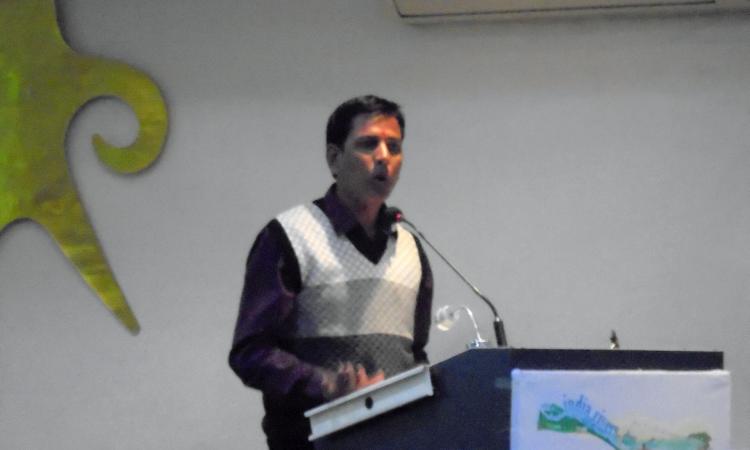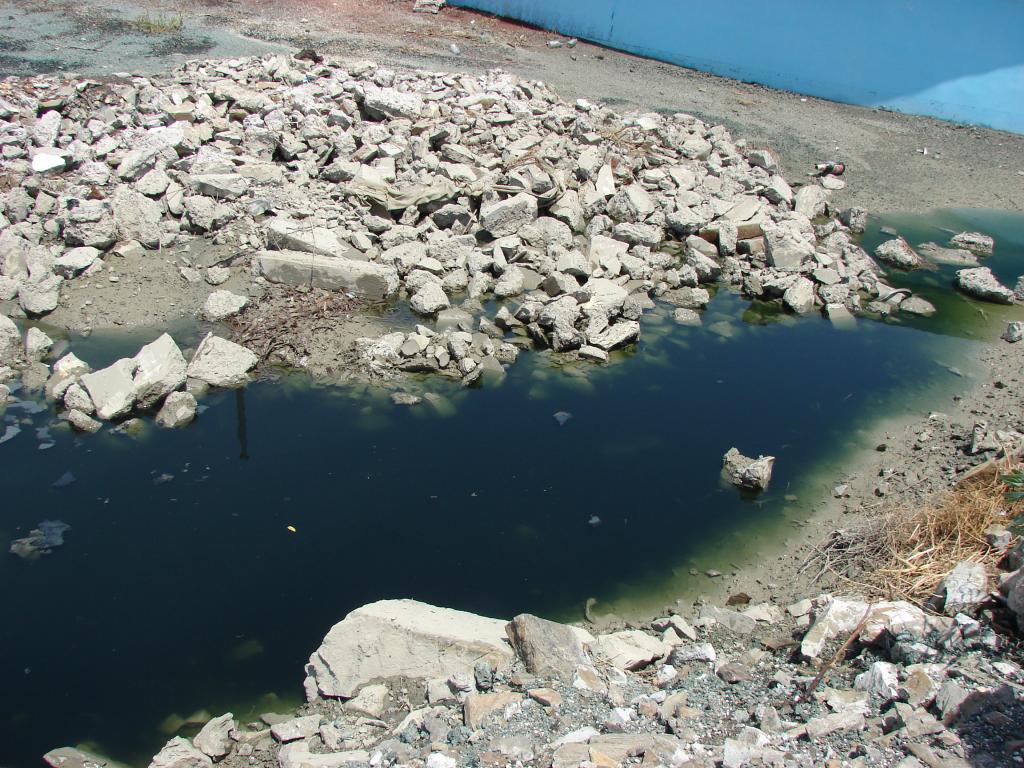
A seasonal river in Pali, Rajasthan, the Bandi is nothing short of a sewer. The textile town has witnessed rampant industrial growth, raw sewage discharges and toxic contamination of its waters. The river, which is devoid of lean season flow, is polluted up to 55 km downstream. The river water is unfit for drinking as well as irrigation. As per a survey by the groundwater department, its water has been found to contain chloride, sulphate, dissolved solids, and heavy metals beyond permissible limits. Most of these metals are toxic and extremely harmful and can lead to health ailments like skin problems, reduced immunity and damages to the nervous and the cardiovascular systems. This sorry state of the river water has driven all but the hardiest away from the river and the farmlands that depend on the river’s water.
Locals get together for their river
Having had enough of it, a movement of locals under the leadership of Nemaram Patel began in the mid-90s. It picked up momentum in mid-2000 under the leadership of his successor Mahaveer Singh Sukarlai, signaling a new era for the Bandi river. In 2004, under the banner of Sri Kisan Paryavaran Sangarsh Samiti, farmers from around 50 villages opposed the industries polluting not just the river and the groundwater but also the water in the Nehra dam 40 km downstream. The polluted water was making the agricultural fields infertile.
Sukarlai says, “The total dissolved solids in the Nehra dam water post-monsoon (2016) was recorded at 560 PPM (parts per million); during the summer season (2017), it rose to 2950 PPM. The electrical conductivity of the water increased to 6.3 from 1.7 during the same period.”
Textile industries as main culprits

“Pali has three industrial areas with several industries, especially textile mills. The area was identified as a critically polluted one by the Central Pollution Control Board in 1998. The Ministry of Environment and Forests also intervened in 2009 by declaring the area critically polluted, banning further expansion of any industry there. The water resources department, based on the tests of the water quality of the dam, found it unfit for consumption or irrigation. In spite of so many government agencies pointing to pollution, it continued unabated,” says Sukarlai.
Things began deteriorating in the 1990s when the dyeing units switched from processing cotton fabrics to synthetic ones to gratify the changing market needs. The effluents from processing cotton fabrics were alkaline in nature and the common effluent treatment plants were built keeping this in mind. But when the dyeing of synthetic clothes began in the area, the effluent turned acidic leaving the existing plants redundant. As a result, untreated or partially treated effluents were increasingly let out into the river.
The samiti led by Sukarlai, who is also its general secretary, intervened by holding jan sabhas (public meetings). The riverine and farming communities monitored the water and were able to establish the presence of arsenic and zinc in treated effluent, river and groundwater. After an intense agitation by the locals, in 2012, the district administration claimed that it has shut down many textile industries and closed the outlet points for water. They maintained that the situation has improved after the steps were taken.
The four common effluent treatment plants maintained by the Pali Water Pollution Control Research Foundation--an industry initiative--failed to treat the waters of the 800 units that were a part of it. According to Rajasthan state pollution control board, the four plants together have a capacity of 34.86 million litres a day. “The industries, to maximise their profits, were saving on the operating costs of the treatment plant by bypassing the effluent treatment process. Also, they were pumping wastewater into the aquifers in the name of zero discharge,” says Sukarlai.
Samiti continues agitation
A legal battle was being waged by the samiti since 2002 to stop the Bandi river pollution in its tracks. As a result, the first directive from the Rajasthan state came up in 2004, recommending the closure of companies operating in non-industrial areas. The companies lobbied and appealed against the court order. The court upheld the decision in 2008 and again directed the companies to shift out of non-conforming areas. The court ordered that treated water from the common effluent treatment plants be used for recycling or agriculture. The Rajasthan state pollution control board was directed to set up a flow metre at every industrial unit to measure the actual discharges. The industries moved an application in 2012 seeking a modification of the order and to allow them to function until they carry out the desired pollution abatement works. The court refused their plea but the industries continued their activities on the sly.
In May 2012, hundreds of people led by Sukarlai gheraoed the office of the Pali Water Pollution Control Research Foundation and agitated till the collector intervened by shutting down about 150 units. In his speech at India Rivers Day 2017, Sukarlai expressed his concern that the units continue to operate slyly. Many potentially polluting units numbering over 500 continue to operate without the consent of the board. Just 64 units have the “consent to operate” at present. The industries here are pumping wastewater into the aquifers in the name of zero discharge.
Sukarlai went to the national green tribunal over Bandi river pollution. The NGT has on March 5, 2017, ordered the suspension of work in the textile dyeing and printing units in Pali district that were operating without the necessary approval from the Rajasthan state pollution control board.
Three decades on, the Bandi continues to retain its status as a polluted river. By and large, industries go on with their polluting ways in complete disregard for the people and the resources. However, sustained vigilance from people like Sukarlai has made small gains which are so far not reversed. As Sukarlai continues working overtime to bring violators to justice, we hope that the river segment sees the government enforcement of pollution laws. “If only river pollution met with the same intense opposition as a film release does,” quips Sukarlai at the India River Day.